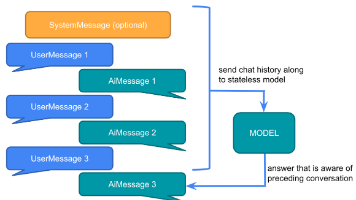前端性能优化实用方案(五):Vue和React的渲染性能优化
前端性能优化实用方案(五):Vue和React的渲染性能优化
现代前端框架虽然已经做了很多底层优化,但开发者仍然可以通过合理的编码方式来进一步提升渲染性能。不同框架有各自的优化策略和最佳实践。
5.1 React相关技术栈优化
React提供了丰富的性能优化手段,开发者可以根据具体场景选择合适的优化策略。
5.1.1 React.memo 和 useMemo
在实际项目中,组件的不必要重渲染往往是性能瓶颈的主要原因。React.memo可以帮我们避免这个问题,而useMemo则能缓存复杂的计算结果。
components/OptimizedComponent.jsx
import React, { memo, useMemo, useCallback } from 'react';
// 使用React.memo防止不必要的重渲染
const ExpensiveComponent = memo(({ data, onUpdate }) => {
// 使用useMemo缓存复杂计算
const processedData = useMemo(() => {
return data.map(item => ({
...item,
computed: item.value * 2 + Math.random()
}));
}, [data]);
return (
<div>
{processedData.map(item => (
<div key={item.id} onClick={() => onUpdate(item.id)}>
{item.computed}
</div>
))}
</div>
);
});
// 父组件使用useCallback优化
const ParentComponent = () => {
const [items, setItems] = useState([]);
// 缓存回调函数
const handleUpdate = useCallback((id) => {
setItems(prev => prev.map(item =>
item.id === id ? { ...item, updated: true } : item
));
}, []);
return <ExpensiveComponent data={items} onUpdate={handleUpdate} />;
};
这里有个小技巧:memo的比较是浅比较,如果props是对象或数组,记得配合useMemo使用。否则每次父组件渲染时,子组件还是会重新渲染。
5.1.2 虚拟化和懒加载
当列表数据量很大时,虚拟化是必不可少的优化手段。react-window是个不错的选择,它只渲染可见区域的元素。
components/VirtualizedList.jsx
import { FixedSizeList as List } from 'react-window';
import { lazy, Suspense } from 'react';
// 懒加载组件
const LazyComponent = lazy(() => import('./HeavyComponent'));
// 虚拟化列表项
const ListItem = ({ index, style, data }) => (
<div style={style}>
<div>Item {data[index].name}</div>
</div>
);
// 虚拟化列表容器
const VirtualizedList = ({ items }) => (
<List
height={400}
itemCount={items.length}
itemSize={50}
itemData={items}
>
{ListItem}
</List>
);
// 使用Suspense包装懒加载组件
const App = () => (
<div>
<Suspense fallback={<div>Loading...</div>}>
<LazyComponent />
</Suspense>
<VirtualizedList items={largeDataSet} />
</div>
);
懒加载特别适合那些不是首屏必需的重型组件。用户可能永远不会访问某个页面,那为什么要在初始加载时就把它包含进来呢?
5.2 Vue中v-show与v-if的选择
这是Vue开发中经常遇到的选择题。简单来说:频繁切换用v-show,一次性决定用v-if。
components/ConditionalRendering.vue
<template>
<div>
<!-- 频繁切换:使用v-show -->
<div class="tabs">
<button @click="activeTab = 'tab1'">Tab 1</button>
<button @click="activeTab = 'tab2'">Tab 2</button>
<button @click="activeTab = 'tab3'">Tab 3</button>
</div>
<!-- 标签页内容:频繁切换,使用v-show -->
<div v-show="activeTab === 'tab1'" class="tab-content">
<ExpensiveComponent1 />
</div>
<div v-show="activeTab === 'tab2'" class="tab-content">
<ExpensiveComponent2 />
</div>
<div v-show="activeTab === 'tab3'" class="tab-content">
<ExpensiveComponent3 />
</div>
<!-- 权限控制:一次性决定,使用v-if -->
<div v-if="user.hasAdminPermission" class="admin-panel">
<AdminComponent />
</div>
<!-- 错误状态:很少显示,使用v-if -->
<div v-if="error" class="error-message">
{{ error.message }}
</div>
<!-- 模态框:偶尔显示,使用v-if -->
<Modal v-if="showModal" @close="showModal = false">
<ModalContent />
</Modal>
</div>
</template>
<script setup>
import { ref } from 'vue';
const activeTab = ref('tab1');
const showModal = ref(false);
const error = ref(null);
const user = ref({ hasAdminPermission: false });
</script>
v-show只是切换CSS的display属性,DOM元素始终存在。而v-if会真正地创建和销毁DOM元素。所以标签页这种场景,用v-show就对了。
5.3 循环和动态内容的key值优化
key值的选择直接影响Vue的diff算法效率。用index做key是很多新手会犯的错误。
components/ListOptimization.vue
<template>
<div>
<!-- 不推荐:使用index作为key -->
<div class="bad-example">
<div v-for="(item, index) in items" :key="index">
<input v-model="item.name" />
<button @click="removeItem(index)">删除</button>
</div>
</div>
<!-- 推荐:使用唯一ID作为key -->
<div class="good-example">
<div v-for="item in items" :key="item.id">
<input v-model="item.name" />
<button @click="removeItem(item.id)">删除</button>
</div>
</div>
<!-- 动态组件:使用key强制重新渲染 -->
<component
:is="currentComponent"
:key="componentKey"
v-bind="componentProps"
/>
</div>
</template>
<script setup>
import { ref, computed } from 'vue';
const items = ref([
{ id: 1, name: 'Item 1' },
{ id: 2, name: 'Item 2' },
{ id: 3, name: 'Item 3' }
]);
const currentComponent = ref('ComponentA');
// 当组件类型或关键属性变化时,更新key强制重新渲染
const componentKey = computed(() => {
return `${currentComponent.value}-${Date.now()}`;
});
const removeItem = (id) => {
items.value = items.value.filter(item => item.id !== id);
};
</script>
想象一下,如果你删除了列表中间的一个元素,用index做key的话,Vue会认为后面所有元素都变了,导致大量不必要的DOM操作。
而用唯一ID做key,Vue就能准确识别哪个元素被删除了,只需要移除那一个DOM节点。
5.4 keep-alive缓存优化
keep-alive是Vue的一个内置组件,可以缓存组件实例。这对于标签页和路由切换场景特别有用。
components/CachedComponents.vue
<template>
<div>
<!-- 缓存所有动态组件 -->
<keep-alive>
<component :is="currentView" :key="viewKey" />
</keep-alive>
<!-- 选择性缓存 -->
<keep-alive :include="['UserProfile', 'Dashboard']">
<router-view />
</keep-alive>
<!-- 限制缓存数量 -->
<keep-alive :max="5">
<TabComponent
v-for="tab in tabs"
:key="tab.id"
v-show="tab.id === activeTabId"
:tab-data="tab"
/>
</keep-alive>
</div>
</template>
<script setup>
import { ref, onActivated, onDeactivated } from 'vue';
const currentView = ref('Dashboard');
const activeTabId = ref(1);
const tabs = ref([
{ id: 1, name: 'Tab 1', component: 'TabComponent' },
{ id: 2, name: 'Tab 2', component: 'TabComponent' }
]);
// 组件激活时的钩子
onActivated(() => {
console.log('组件被激活');
// 可以在这里刷新数据
});
// 组件失活时的钩子
onDeactivated(() => {
console.log('组件被缓存');
// 可以在这里保存状态
});
</script>
router/index.js
// 路由级别的缓存配置
const routes = [
{
path: '/dashboard',
component: Dashboard,
meta: { keepAlive: true } // 标记需要缓存
},
{
path: '/profile',
component: UserProfile,
meta: { keepAlive: true }
},
{
path: '/settings',
component: Settings,
meta: { keepAlive: false } // 不缓存
}
];
keep-alive的max属性很重要,它限制了缓存组件的数量。如果不设置这个值,缓存会无限增长,最终导致内存泄漏。
5.5 请求粒度优化
很多时候,性能问题不在渲染本身,而在于数据请求的粒度不合理。
api/optimizedRequests.js
// 细粒度请求管理
class RequestManager {
constructor() {
this.cache = new Map();
this.pendingRequests = new Map();
}
// 按需请求特定字段
async fetchUserData(userId, fields = ['basic']) {
const cacheKey = `user-${userId}-${fields.join(',')}`;
if (this.cache.has(cacheKey)) {
return this.cache.get(cacheKey);
}
const data = await fetch(`/api/users/${userId}?fields=${fields.join(',')}`);
this.cache.set(cacheKey, data);
return data;
}
// 批量请求优化
async batchFetch(requests) {
const batchKey = JSON.stringify(requests);
if (this.pendingRequests.has(batchKey)) {
return this.pendingRequests.get(batchKey);
}
const promise = fetch('/api/batch', {
method: 'POST',
body: JSON.stringify({ requests })
}).then(res => res.json());
this.pendingRequests.set(batchKey, promise);
try {
const results = await promise;
return results;
} finally {
this.pendingRequests.delete(batchKey);
}
}
}
这个RequestManager类解决了两个常见问题:重复请求和过度请求。通过缓存和批量处理,可以大幅减少网络请求的数量。
components/OptimizedDataFetching.vue
<template>
<div>
<!-- 只请求当前需要的数据 -->
<UserBasicInfo
v-if="showBasicInfo"
:user="basicUserData"
/>
<UserDetailInfo
v-if="showDetailInfo"
:user="detailUserData"
/>
<UserStatistics
v-if="showStatistics"
:stats="userStats"
/>
</div>
</template>
<script setup>
import { ref, watch, computed } from 'vue';
const props = defineProps(['userId']);
const showBasicInfo = ref(true);
const showDetailInfo = ref(false);
const showStatistics = ref(false);
const requestManager = new RequestManager();
// 基础信息:总是需要
const basicUserData = ref(null);
// 详细信息:按需加载
const detailUserData = ref(null);
// 统计信息:按需加载
const userStats = ref(null);
// 监听用户ID变化,重新请求基础信息
watch(() => props.userId, async (newUserId) => {
if (newUserId) {
basicUserData.value = await requestManager.fetchUserData(
newUserId,
['basic']
);
}
}, { immediate: true });
// 监听详细信息显示状态
watch(showDetailInfo, async (show) => {
if (show && !detailUserData.value) {
detailUserData.value = await requestManager.fetchUserData(
props.userId,
['profile', 'preferences', 'settings']
);
}
});
// 监听统计信息显示状态
watch(showStatistics, async (show) => {
if (show && !userStats.value) {
userStats.value = await requestManager.fetchUserData(
props.userId,
['statistics', 'activity']
);
}
});
</script>
这种按需加载的方式特别适合复杂的用户界面。用户可能永远不会点开详细信息,那为什么要在一开始就加载所有数据呢?
stores/optimizedStore.js
// 状态管理中的请求优化
import { defineStore } from 'pinia';
export const useOptimizedStore = defineStore('optimized', {
state: () => ({
users: new Map(),
loadingStates: new Set()
}),
actions: {
// 只更新变化的部分
async updateUserField(userId, field, value) {
const loadingKey = `user-${userId}-${field}`;
if (this.loadingStates.has(loadingKey)) {
return; // 避免重复请求
}
this.loadingStates.add(loadingKey);
try {
await fetch(`/api/users/${userId}/${field}`, {
method: 'PATCH',
body: JSON.stringify({ [field]: value })
});
// 只更新特定字段
const user = this.users.get(userId) || {};
user[field] = value;
this.users.set(userId, user);
} finally {
this.loadingStates.delete(loadingKey);
}
},
// 批量更新
async batchUpdateUsers(updates) {
const results = await requestManager.batchFetch(
updates.map(update => ({
method: 'PATCH',
url: `/users/${update.userId}`,
data: update.data
}))
);
// 批量更新状态
results.forEach((result, index) => {
const { userId } = updates[index];
const user = this.users.get(userId) || {};
Object.assign(user, result.data);
this.users.set(userId, user);
});
}
}
});
状态管理层面的优化同样重要。避免重复请求,精确更新状态,这些都能提升应用的响应速度。
小结
Vue和React的渲染性能优化其实没有什么神秘的技巧,关键是要理解框架的工作原理:
- React优化:合理使用memo、useMemo、useCallback,配合虚拟化技术处理大量数据
- 条件渲染:频繁切换用v-show,一次性决定用v-if
- 列表渲染:使用稳定唯一的key值,千万别用index
- 组件缓存:keep-alive缓存重复使用的组件,但要控制缓存数量
- 请求优化:按需请求,减少数据传输,精确更新状态
这些优化策略需要根据具体业务场景来选择。不要为了优化而优化,先找到真正的性能瓶颈,然后针对性地解决问题。记住,过早的优化是万恶之源,但合理的优化能让用户体验上一个台阶。
更多推荐
 已为社区贡献1条内容
已为社区贡献1条内容







所有评论(0)